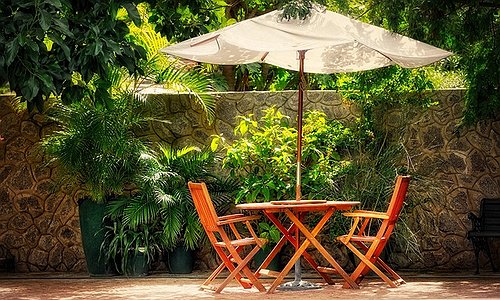How forgotten folklore could be the Karoo's next tourism product
As the tourism industry chases authenticity and slow travel, the Karoo sits on a goldmine of forgotten folklore - local legends, ancestral creatures, roadside ghosts - that could become its most enchanting economic offering yet.
What if, instead of just watching meerkats or photographing cracked salt pans, visitors were invited to sit around a fire and hear about the real Karoo: the one of ghostly hitchhikers, water spirits, talking mantises, and prophetic owls?
Let’s walk into that twilight space. Story by story.
The watermeid of Meiringspoort
The river sings when no one listens.
High in the mountain folds near Oudtshoorn, where the gorge of Meiringspoort cleaves through rock like a wound, a mermaid waits. Locals call her the Watermeid—a dark-haired spirit said to haunt a deep rock pool beneath a waterfall. She’s no Ariel: she doesn’t sing for love, but lures the unwary to their death. What’s remarkable is how few South Africans - even locals - know about her. And yet, the cave art of the Khoi-San shows fish-tailed figures that might very well be her ancestors. A guided Mermaid Route through the Klein Karoo, combining myth, geology, and local oral storytelling, could make her the Karoo’s own version of Nessie, but with more mystery, and far more depth.
The phantom hitchhiker of Uniondale
She gets in. She disappears. You drive a little slower after that.
On a lonely road near Uniondale, legend says a young woman named Maria Roux died in a car crash on Easter weekend in 1968. Since then, motorists have reported picking up a hitchhiker who vanishes mid-journey. This story’s gotten enough traction over the decades to earn her the title of South Africa’s most famous ghost. But imagine building a ghost tour, complete with a refurbished 1970s car, immersive audio, and local guides who know the stories behind the story. Instead of another dusty roadside memorial, Uniondale could become a place where folklore quite literally gets into the car with you.
ǀKaggen the mantis god
Not all gods come with thunder. Some wear wings and change shape.
To understand the true depth of Karoo mythology, you have to go back. Way back into the cosmology of the San people, whose god ǀKaggen was a mantis, or sometimes an eland, or sometimes a lazy trickster with profound spiritual insights. He created the moon. He broke the rules. He taught lessons not through force but metamorphosis. There’s potential here for an animated folktale series, or even open-air storytelling nights featuring San elders or scholars, paired with stargazing under that impossible Karoo sky. These aren’t just tales, they're keys to understanding how the land itself was once read like a sacred text.
Bringing it all together
It’s worth noting that the idea of storytelling in the Karoo isn’t entirely dormant. A few pioneering outfits have already begun threading folklore into their offerings. There’s still room, and a real hunger, for something more immersive and deliberate: a dedicated folklore trail or festival series; partnerships with storytellers, artists, and scholars; community-run night tours in mythic landscapes; even roadside audio guides triggered by location, telling the tales of the land you pass through.
The modern traveller isn’t just looking for a place to go, they’re looking for a place to feel. Folklore tourism, when done respectfully and in collaboration with local communities, can revitalize towns while supporting storytellers and preserving fragile oral traditions.
Disclaimer: This article draws upon historical information and folklore that are in the public domain. Any references to specific works are used in accordance with applicable legal standards.




